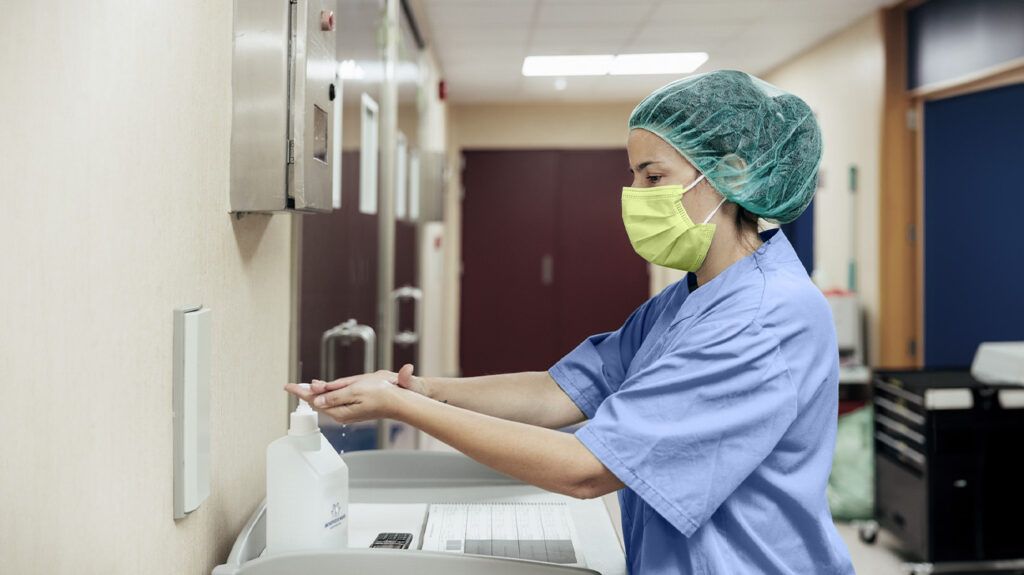Supraglottoplasty is a surgical procedure that removes excess tissue in the larynx, or voice box. It is the primary treatment for laryngomalacia, a condition that causes stridor, or noisy breathing, in children.
Supraglottoplasty is highly precise and aims to correct specific development issues in the body. Generally, the procedure takes less than an hour under general anesthesia.
It can greatly improve a child’s eating, drinking, and sleeping abilities.
This article provides an overview of supraglottoplasty, its associated risks, and what to expect during and after the procedure.

Supraglottoplasty is a surgical procedure that doctors use to treat obstructive airway disorders in infants and young children. Less often, doctors recommend it in older children or adults.
It aims to remove excess tissue from the larynx or voice box.
Supraglottoplasty for laryngomalacia
Supraglottoplasty plays a role in treating laryngomalacia. This is a congenital disease that causes the soft tissue of the larynx to fall into the airway when a child breathes in.
Symptoms may include noisy breathing (known as stridor), respiratory distress, or feeding difficulties.
Most cases of laryngomalacia do not require treatment, but when surgery is necessary, supraglottoplasty is usually the
The main indications for supraglottoplasty are when a child experiences the following:
- respiratory distress, such as apneic spells, which involve periods without breathing, and blue spells
- “failure to thrive,” a term doctors use to characterize growth difficulties in children
- a sunken chest due to a condition called pectus excavatum
For some people, laryngomalacia can be life threatening, especially if it affects breathing.
Supraglottoplasty is a
- bleeding
- postoperative swelling
- scarring
- general anesthesia-related risks
Doctors carefully weigh potential risks against the benefits and consider that, in many cases, the procedure significantly improves a child’s quality of life.
Before supraglottoplasty, doctors thoroughly evaluate the child’s airway and health. This evaluation typically includes:
- reviewing the child’s medical history
- assessing the child’s swallowing
- conducting a physical examination
- performing diagnostic tests beforehand, such as flexible laryngoscopy, to assess what the voicebox looks like before any surgical intervention
The medical team discusses the procedure with the child’s parents or caregivers, including potential risks and benefits. They also provide information about fasting and other steps before the operation.
The procedure may differ depending on the child’s specific needs.
Generally, the steps
- Anesthesia administration: Before the surgery begins, the anesthesiologist places the child under general anesthesia. This ensures they are entirely sedated and cannot feel pain throughout the procedure.
- Monitoring: The team closely monitors the child’s vital signs — including heart rate, oxygen levels, and blood pressure — to ensure their safety and well-being throughout the procedure.
- Tool positioning: The surgeon inserts specialized instruments through the mouth to access the supraglottic region of the larynx, which is the area above the vocal cords. Surgeons do not make any incisions in the skin.
- Removing tissue: The surgeon uses lasers or other tools to remove excess or redundant tissue carefully from the larynx.
- Recovery: Once surgeons have finished working on the affected area, the team carefully wakens the child from anesthesia and monitors them.
The procedure takes
Doctors may also perform a bronchoscopy at the same time — this lets them see inside the airways and lungs. This is so they can assess for any other structural abnormalities in the airway.
Immediately after the procedure, the surgical team monitors the child in a recovery area until they fully wake up. The team checks that the child is stable and recovering well. They may also provide any appropriate pain management if necessary.
Depending on the child’s age and hospital resources, the team may admit them to the pediatric intensive care unit or a step-down unit with continuous oxygen monitoring. This is to prevent any complications. However, most cases
What is the recovery time for supraglottoplasty?
The length of the hospital stay can vary but is often brief. Depending on the patient’s specific condition and overall health, they may stay in the hospital for 1–2 days.
People can expect swelling after the procedure. For this reason, the child may sound worse or have feeding issues, though this should settle down within 2 weeks.
Often, patients see a speech-language pathologist to ensure feeding safety. Some may also require reflux medications, but most babies with laryngomalacia are already on this.
The outlook following surgery is usually positive, with success rates of
Still, outcomes are
While outcomes may vary depending on various factors, supraglottoplasty can significantly improve a child’s quality of life.
Supraglottoplasty is a microscopic surgical procedure. Infants and young children may have the procedure to address obstructive airway disorders such as laryngomalacia, a common birth condition.
The surgery reshapes tissues in the supraglottic region, correcting anatomical issues that affect breathing. Supraglottoplasty is a standard procedure with a high success rate that can significantly improve a child’s quality of life.
